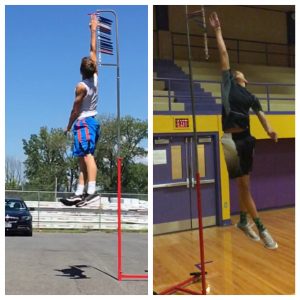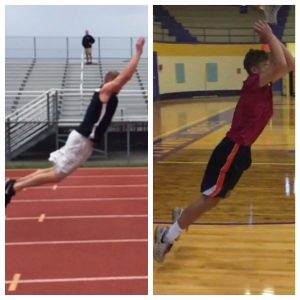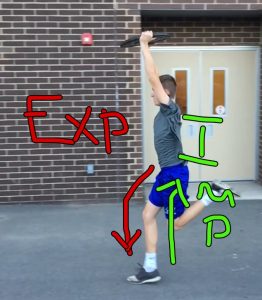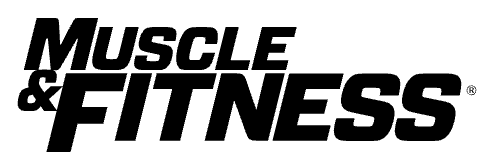To Explode or Implode?
That is the question.
Ole Billy S, pondering explosion versus implosion no doubt
You’ve probably heard the coaching cues before: explode off the line, explode through your hips, or explode off the ground. It’s an innate part of being a powerful athlete- driving out not in. Funny, not once through my years around sports have I ever heard a coach exclaim, “Implode into yourself on that throw Johnson!” Or “When you see that ball move I want you to cave like the Tacoma narrows bridge!” It’s counter intuitive to what one would want to achieve in sports. But, chances are your own muscle firing patterns might mirror this imploding sequence.

Explode up

Explode out
How you ask? Well it all comes down to zones of activation, breathing, and a special little muscle called the psoas. A little back story for this tale is necessary. I have the privilege of having a close friend who is one of the best trainers in the country. I played college football with Jeff Moyer of D.C. Sports Training and he has transformed himself into a sports training savant. 90 percent of the ideas and concepts I mull over and try in the gym and field stem from something I’ve been exposed to by Moyer.
Through Moyer’s various connections in the industry, I’ve had the opportunity to interact with some world class coaches. Recently, I had the chance to meet Moyer in Rochester where we met with Performance Coach Dan Fichter, owner of Wanna Get Fast, in Pittsford, New York. Fichter is also the head football coach at Irondequoit High School, and won Rochester Coach of the Year in 2014. He’s also one of the top running experts in the country and Fichter’s track teams have won six section five titles in eight years. He has spoken at the Nike Indoor Nationals and various podcasts throughout the interwebs. Fichter is also responsible for bringing Douglas Heel, creator of Be Activated, over to the United States from South Africa five years ago. Be Activated is a neurolymphatic driven system of compensation resets and “wake up” drills that was initially designed for physical therapists and medical practitioners. Since then, some of the language has been changed and RPR (Reflexive Performance Reset) was created for the performance side of the industry. RPR is the official performance provider of Douglas’ Be Activated teachings. Dan is also looking to integrate more neurology into the RPR system. I had the opportunity to take a RPR course earlier this year and was blown away. I wanted to know more. I figured who better to learn from than the guy that actually brought Douglas over to the states.
So, back to the question at hand. Exploding versus imploding. This picture is important in understanding the implosion vs explosion concept.

Explosion driving out proximal to distal. Implosion driving up distal to proximal
What does this all mean? Well for one, breathing can effect every joint action in your body. The crazy thing about that concept is that most people breath in an inefficient manner. Breathing poorly can generate a host of other issues throughout the body. The psoas, in theory, should be the major hip flexor in the body. But life, training, and other stressors can actually generate hip flexion in other zones. It is quite possible that your quad can drive hip flexion (zone two), or even crazier your shins (tib anterior, zone three) can do it. So, what we have is an implosion pattern with muscle force driving up (distally to proximally) instead of out.
Up instead of out can lead to injuries because the body is handling force in a poor pattern. It also can lead to hindrance in performance because the body isn’t working in an efficient manner. How do we determine this? We test, activate, and reset the system to be more efficient. Look into contacting the fine folks at RPR or Be Activated or a certified coach in the systems to find out more.


